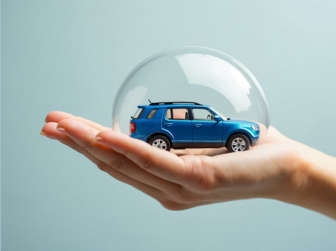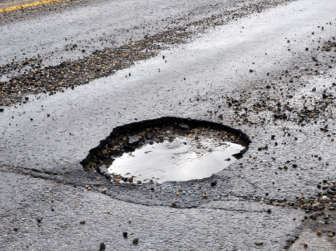.jpg)
Getting a learner’s licence
A learner's licence is a permit that proves that you have basic knowledge of a motor vehicle and the rules of the road. The learner’s licence is valid for 24 months and cannot be extended. You need to be 17 or older to apply for one.
If you have a learner's licence, you’re only allowed to drive when supervised by a licensed driver. If the category of vehicle you’re driving requires a professional driving permit, the licensed driver must also hold a professional driving permit.
Different learner's licences are issued for the various categories of motor vehicle. You can ask your closest licensing department what code you need, depending on what you’ll be driving, for example a motor cycle or a vehicle with a mass not exceeding 3 500kg.
When you’re ready to apply, go to the nearest driving licensing testing centre (DLTC) to book a test date and confirm the booking. You’ll need to give them the following:
- Two identical black-and-white ID photographs (before you have photographs taken you should confirm with the DLTC how many photos they require)
- A booking fee
- Proof of postal and residential address, e.g. utility account. If the utility bill is not in your name, the of owner of the bill must make an affidavit declaring that you live at the address and the utility bill must be attached to the affidavit.
- If you live in an informal settlement, you must bring a letter with an official date stamp from the ward councillor confirming your postal and residential address
Complete the application for learner's licence form (LL1), which is available at the DLTC. If you’re 65 years or older, you must also complete a medical certificate form, which is also available at the DLTC.
You’ll go for an eye test at the testing centre or you can have an eye test performed by a qualified optometrist beforehand and submit the form at the testing centre.
Before you write the learner’s licence test, you must study road signs, motor vehicle controls and road rules to have a basic knowledge of a motor vehicle and road signs.
On the day of the test you must submit the booking receipt and your ID. If you pass the test you must pay the issue fee, which is determined by each province. The licence will be issued on the same day if you passed and paid the relevant fee.
An applicant over 65 years of age or older requires a medical certificate form
These forms are available at any driving licence testing centre
.jpg)
Getting a driver’s licence
You need a driving licence to drive legally in South Africa. Before applying for a driving licence, you must have a learner’s licence.You must be 18 years or older to apply.
Head to your nearest driving licence testing centre (DLTC) to book a date for your driver’s license test. The Driver’s License document requirements are the same as the Learner’s License (see above).
Complete the application for driving licence form (DL1) at the DLTC.Keep the receipt as proof of payment and as confirmation of the test date and time.
On the date of the test, your receipt and learner’s licence will be verified before you can take the test.If you pass the test, your fingerprints will be taken and you’ll undergo an eye test at the DLTC. Alternatively, you can have an eye test performed beforehand at a qualified optometrist and submit the form at the DLTC.
If you pass, you must pay the issuing fee (the cost depends on each province) to receive a temporary driving licence, which you will use while you wait for the ordered driving licence card. You’ll be notified when your driving licence card is ready for collection - it usually takes four to six weeks. You can collect your driving licence at the DLTC where you made your application.
Read more:
5 of the best cars for first-time drivers
How to improve your fuel consumption to save money
Introducing the new Citroen C3 Max


